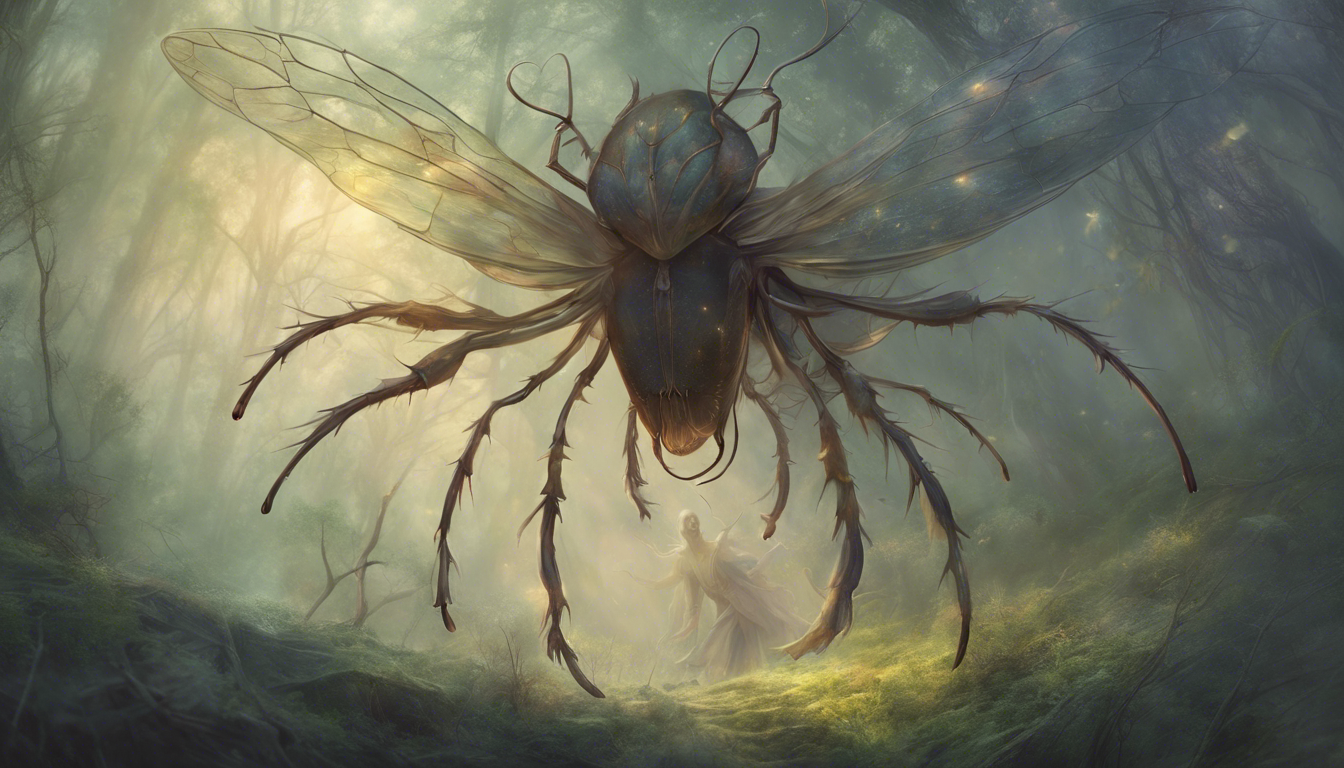Understanding Ticks and Their Impact
Understanding Ticks
Ticks are small arachnids that belong to the order Parasitiformes, closely related to spiders, mites, and scorpions. They are ectoparasites, meaning they live on the outside of their host’s body, feeding on the blood of mammals, birds, and sometimes reptiles and amphibians. Ticks are known vectors of various diseases, making them a significant concern for human and animal health.
The Impact of Ticks
Ticks can have a profound impact on both humans and animals. Their bites can transmit a range of diseases, including Lyme disease, Rocky Mountain spotted fever, and tick-borne encephalitis. These diseases can cause severe symptoms and, if left untreated, lead to long-term health complications. Additionally, ticks can cause skin irritations and allergic reactions in some individuals.
Prevention and Control
Preventing tick bites is crucial in avoiding tick-borne illnesses. Here are some tips for prevention:
- Use insect repellent containing DEET
- Wear long sleeves and pants when in areas with high tick populations
- Perform thorough tick checks after spending time outdoors
- Treat pets with tick prevention products
For those living in tick-prone areas, it’s essential to keep grass and vegetation trimmed and to create a barrier between wooded areas and living spaces to reduce the risk of exposure.
Removing Ticks
If you find a tick attached to your skin, it’s crucial to remove it properly to reduce the risk of disease transmission. Here’s how to safely remove a tick:
- Use fine-tipped tweezers to grasp the tick as close to the skin’s surface as possible.
- Gently pull upward with steady, even pressure. Avoid twisting or jerking the tick to prevent mouthparts from breaking off and remaining in the skin.
- After removal, clean the bite area with rubbing alcohol, iodine, or soap and water.
- Dispose of the tick by flushing it down the toilet or placing it in alcohol, then seal it in a bag and dispose of it in the trash.
Seeking Medical Attention
If you develop symptoms such as fever, rash, headache, or joint pain after a tick bite, seek medical attention promptly. Early diagnosis and treatment of tick-borne diseases are essential for a positive outcome. Inform your healthcare provider about the tick bite and the duration of attachment to determine the appropriate course of action.
Different Types of Ticks and Their Habits

Ticks Overview: Ticks are small arachnids that are external parasites, commonly found in wooded or grassy areas. They feed on the blood of humans and animals, potentially transmitting diseases in the process. Understanding the different types of ticks and their habits is crucial for effective prevention and control.
The Types of Ticks:
1. Deer Ticks (Blacklegged Ticks): Deer ticks are commonly found in wooded areas and transmit Lyme disease, which can cause symptoms such as fever, fatigue, and joint pain. They are most active during the spring and fall.
2. American Dog Ticks: These ticks are often found in areas with tall grass and vegetation. They can transmit diseases such as Rocky Mountain spotted fever and tularemia to humans and pets.
3. Lone Star Ticks: Lone star ticks are common in the southeastern and eastern United States. They can transmit diseases such as ehrlichiosis and Southern tick-associated rash illness (STARI).
Ticks Habits and Behavior:
1. Seeking Hosts: Ticks typically climb tall grass or vegetation and wait for a host to pass by. They detect hosts by sensing heat, carbon dioxide, and vibrations.
2. Feeding Process: Once a tick finds a host, it attaches itself by cutting into the skin and feeding on blood. Ticks secrete a cement-like substance to anchor themselves securely.
3. Disease Transmission: Ticks can transmit various diseases to their hosts through their bites. It is essential to remove ticks properly to reduce the risk of disease transmission.
By understanding the habits and types of ticks, individuals can take proactive measures to prevent tick bites, such as wearing protective clothing, using insect repellent, and conducting thorough tick checks after outdoor activities.
Dealing with Tick Bites: Prevention and Treatment

Ticks are small arachnids that feed on the blood of animals, including humans. They can transmit various diseases such as Lyme disease and Rocky Mountain spotted fever. Knowing how to prevent tick bites and treat them promptly is essential for maintaining good health. Here’s a guide on dealing with tick bites effectively.
Prevention
1. Wear Protective Clothing: When venturing into tick-prone areas such as wooded or grassy areas, wear long sleeves, pants, and closed-toe shoes to minimize skin exposure.
2. Use Insect Repellent: Apply insect repellents containing DEET or permethrin on exposed skin and clothing to repel ticks effectively.
3. Perform Tick Checks: After spending time outdoors, check your body, clothing, and pets for ticks. Pay close attention to hidden areas such as the scalp, behind the ears, and underarms.
4. Maintain Your Yard: Keep your yard well-maintained by regularly mowing the lawn, removing leaf litter, and creating a barrier between wooded areas and your living space.
Treatment
1. Remove the Tick: If you find a tick attached to your skin, use fine-tipped tweezers to grasp the tick as close to the skin’s surface as possible. Pull upward with steady, even pressure to remove the tick completely.
2. Clean the Bite Area: After removing the tick, clean the bite area and your hands with rubbing alcohol, iodine, or soap and water to prevent infection.
3. Monitor for Symptoms: Keep an eye on the bite site for any signs of infection or illness. Symptoms of tick-borne diseases may include fever, headache, and rash.
4. Seek Medical Attention: If you develop symptoms following a tick bite or are unable to remove the tick entirely, seek medical attention promptly. Your healthcare provider may prescribe antibiotics if necessary.
By following these prevention and treatment measures, you can effectively deal with tick bites and reduce the risk of tick-borne diseases. Remember, early detection and proper care are crucial in addressing tick bites and their potential complications. Stay informed and stay safe when exploring the great outdoors.
Signs of Tick-Borne Diseases and Seeking Medical Help

Recognizing Tick Bites
Ticks are small arachnids that feed on the blood of mammals, birds, and sometimes reptiles and amphibians. When a tick bites a human, it attaches itself to the skin and feeds on blood. It’s important to regularly check for ticks, especially after spending time outdoors in grassy or wooded areas. Tick bites are often painless, so it’s crucial to be vigilant.
Signs of Tick-Borne Diseases
Tick bites can transmit various diseases, including Lyme disease, Rocky Mountain spotted fever, and Ehrlichiosis. Symptoms of tick-borne diseases can vary but may include fever, headache, fatigue, and body aches. In the case of Lyme disease, a distinctive bullseye rash may appear around the bite site. If you experience any of these symptoms after a tick bite, seek medical attention promptly.
Seeking Medical Help
If you find a tick attached to your skin, it’s essential to remove it carefully using fine-tipped tweezers. Grasp the tick as close to the skin’s surface as possible and pull upward with steady, even pressure. After removing the tick, clean the bite area and your hands thoroughly with rubbing alcohol or soap and water. Monitor the site for any signs of infection.
It’s crucial to seek medical help if you develop symptoms of a tick-borne disease within a few weeks after a tick bite. Your healthcare provider may prescribe antibiotics or other treatment based on the specific disease. Early detection and treatment of tick-borne illnesses are key to preventing complications and promoting recovery.
Remember, prevention is the best defense against tick bites and tick-borne diseases. Use insect repellent, wear long sleeves and pants, and perform thorough tick checks after spending time outdoors. By staying informed and taking proactive measures, you can reduce the risk of tick-borne illnesses and enjoy outdoor activities safely.


Article written by Dera
Greetings, I am Dera, a 35-year-old individual with a deep passion for spirituality. Through my website, I aim to share my insights and knowledge to help others on their spiritual journey. Join me on the path to inner peace and enlightenment.